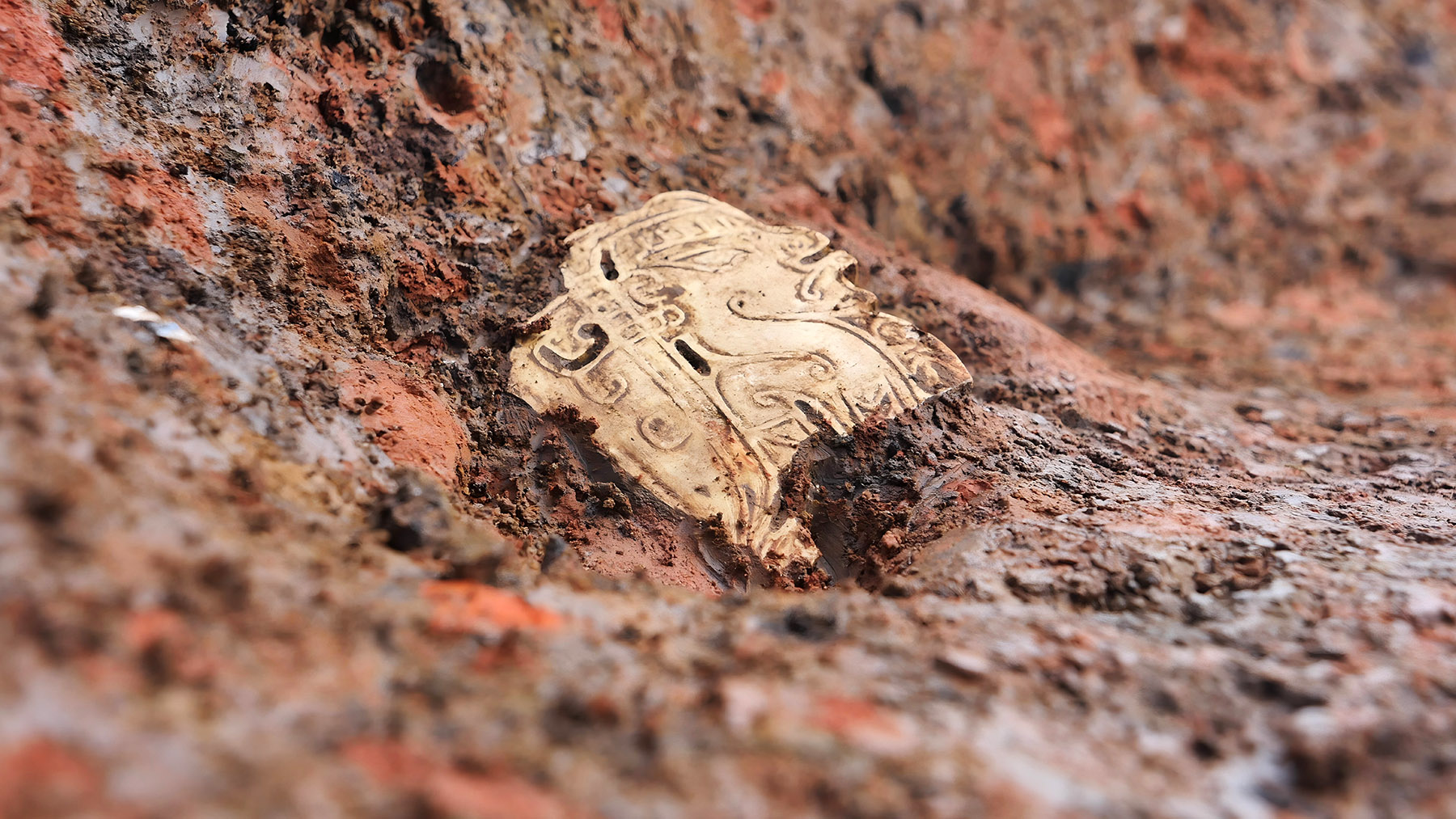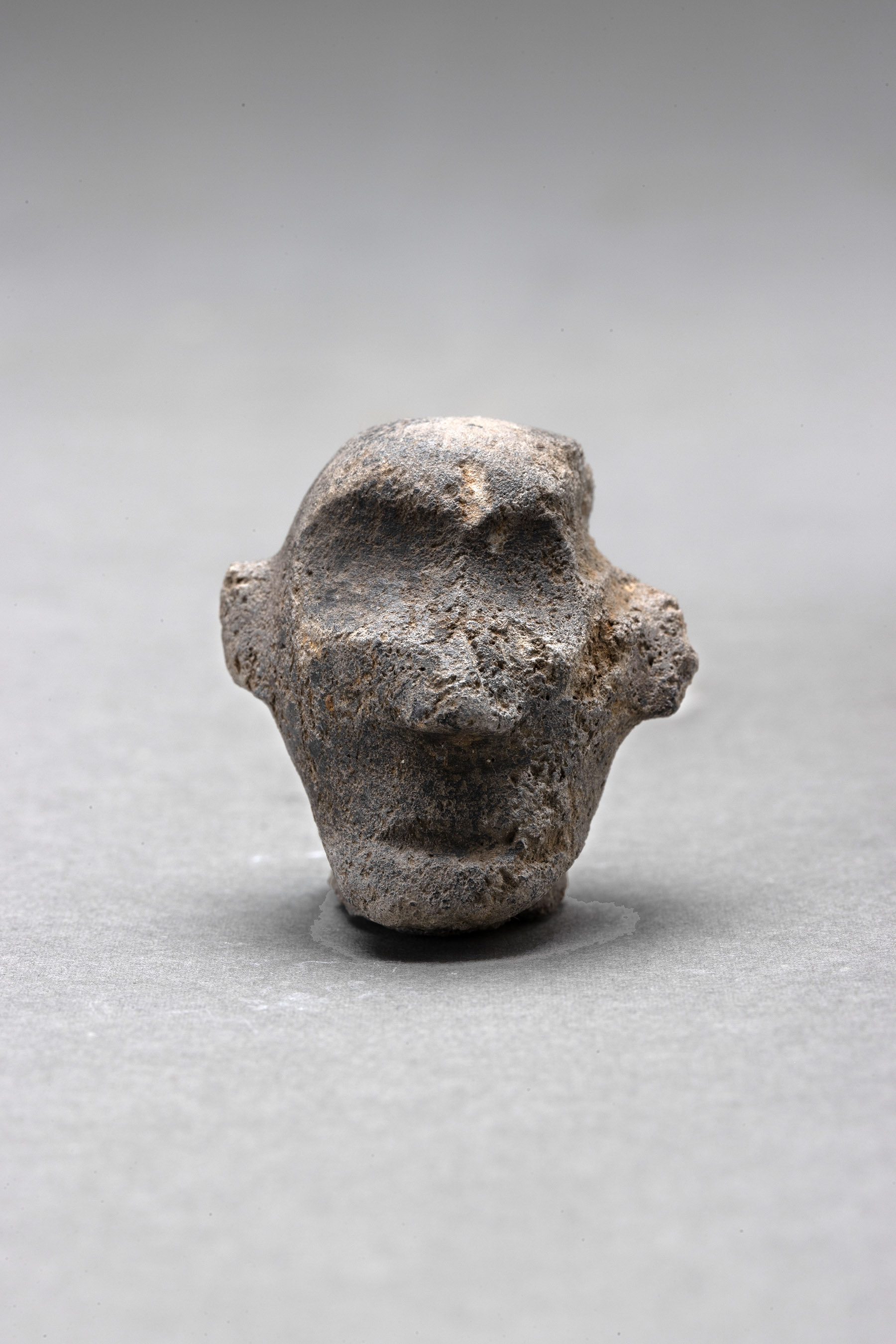
With the latest excavations at the Sanxingdui site in Guanghan, Sichuan province, revealing a jade-processing workshop, archaeologists are gradually piecing together a picture of what life in the ancient city looked like. Estimated to be 3,000 to 3,600 years old, the site has long amazed scholars and the public alike with its rich haul of artifacts.
At a meeting of the National Cultural Heritage Administration in Beijing on Thursday, the excavation of the jade-processing workshop, which is spread over 1,000 square meters, was announced.
READ MORE: Cuzco exhibition sheds light on shared beliefs of ancient Shu, Inca civilizations
Among the discoveries at the workshop were piles of stored stones, raw material pits and waste material deposits. Over 20 types of jade and stone artifacts were unearthed as well, including jade figurines, jade discs known as bi, stone tubes known as cong, hat-shaped stone objects and snake-shaped stone relics, said Ran Honglin, a researcher at the Sichuan Provincial Institute of Cultural Relics and Archaeology, who led the excavation.
The dating results indicate the objects were produced sometime between 1550 BC and 1250 BC. Ran said the workshop provided crucial clues to understanding previous findings. It proved that despite the artisans absorbing cultural elements from elsewhere, the Sanxingdui jade items could have been made locally.
The Sanxingdui site attracted global attention in 1986 when two pits, believed to have been used for ritualistic sacrifices, were excavated, together with a rich reserve of bronze and jade artifacts.

Between 2020 and 2022, another round of excavation at the site unearthed six more such "sacrificial pits" filled with stunning artifacts. Over 17,000 cultural relics were unearthed from the site, making it one of the biggest archaeological discoveries in China in recent years and turning Sanxingdui into a cultural buzzword among the public.
Thanks to the relics, the Sanxingdui Museum has recorded over 5.9 million visits this year.
"We urgently needed to figure out where and how these artifacts were made," Ran recalled. "So, after the excavation of the 'sacrificial pits' was completed, we began to seek answers in areas where there could be workshops.
"The jade-processing workshop also gives an idea about production technology, resource management and division of labor in the Sanxingdui era," he said. "It shows how a complicated society was organized."
Excavations have also revealed the urban infrastructure of the Sanxingdui site. To the south of the workshop, a three-tier earthen terrace covering an area of over 6,000 sq m was discovered. The ruins of a wood and bamboo structure measuring 200 sq m were found on the terrace premises.
"This could have been a core zone of a settlement complex," Ran said.
Another key new finding is a large-scale network of waterways in the eastern and southern parts of the Sanxingdui site.
"Some are natural waterways while the others are moats by city walls and ditches within the city," Ran said. "We could also figure out the direction of water flow." At the spots where the waterways flowed out of the town, Ran's team came across several sluice gates.

Lei Xingshan, a veteran archaeologist with Beijing Union University, said the terraces and waterways could provide a fresh view of Sanxingdui's urban layout.
"Though it's still too early to arrive at a conclusion, it reminds us of the water town of Liangzhu," he said.
A UNESCO World Heritage Site in Zhejiang province, the Archaeological Ruins of Liangzhu City, estimated to be over 4,300 years old, is also known for its highly developed water conservancy system and jade.
"Better knowledge of the urban layout of Sanxingdui helped us to place previous findings into a bigger picture," said Chen Xingcan, a veteran archaeologist at the Chinese Academy of Social Sciences. "The recent discovery is no less important than those remarkable pits."
ALSO READ: Sanxingdui's mysteries enthrall Beijing museumgoers
The Sichuan Provincial Institute of Cultural Relics and Archaeology is also cooperating with 16 institutions nationwide to carry out restoration and follow-up research on unearthed artifacts from the six "sacrificial pits". About 4,060 artifacts have been cleaned and restored, Ran said.
"On the artifacts, we found various cultural elements, ranging from Central China Plains, Northwest China, the middle reaches of the Yangtze River, and so on," he said.
Wang Lixin, a professor at Northwest University in Xi'an, Shaanxi province, noted that a bronze earring recently found at Sanxingdui showed typical features of Eurasian grasslands at that time, for example, some elements of Andronovo Culture from Siberia and Central Asia.
"Such a wide exchange of cultures and interactions reflects the diverse and inclusive nature of the evolution of Chinese civilization," Ran said.
Wang Ru contributed to this story.
wangkaihao@chinadaily.com.cnNA DAILY


